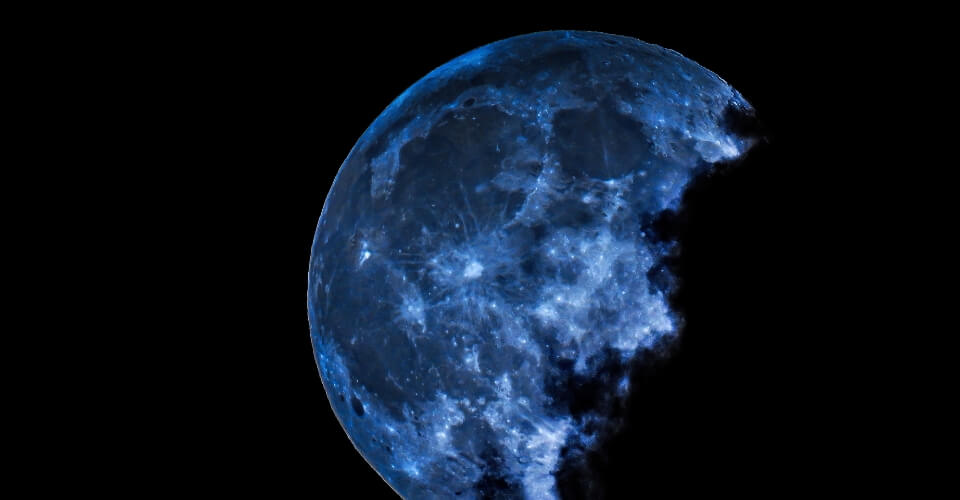Did you know that the moon phase cycle can affect various aspects of existence, nature, and other occurrences?
According to weather experts, a supermoon might alter the intensity of Hurricane Idalia. The storm might evolve due to the supermoon’s proximity to Earth, and its gravity will have more drastic effects on the oceans.
Hence, alerts were issued on Wednesday morning for enhanced tides and surging storms with potential flooding and heavy rainfall. National Hurricane Center Deputy Director Jamie Rhome has also warned that the rare occurrence of a supermoon could increase high tide by almost a foot.
But this blue moon is more special than just a little troublemaker. As it gets closer to Earth, the moon shall cast 30% more light on the planet. You can observe the brightest moon on August 30.
According to NASA, once in a blue moon is not that rare of an occurrence. The research center has categorized a Blue Moon based on the time of its occurrence–
#1 CALENDAR BLUE MOON: This is when two full moons occur in the same month. A new full moon arises every 29.5 days. The Sturgeon Moon was observed on August 1, 2023.
Hence, the full moon on August 30 will be categorized as a blue moon. This type of occurrence is recorded roughly every 2.5 years. So, the following calendar blue moon is expected on May 31, 2026.
#2 SEASONAL BLUE MOON: Every phase of a moon cycle takes about 29.5 days to complete. So, in total, 12 lunar cycles are completed in 354 days, while Earth’s solar year is 365 days. This 13th full moon is classified as a seasonal blue moon, which describes the third full moon of four in one astronomical season. Hence, this blue moon occurs every 1-2 years and is estimated to be observed next on August 19, 2024.
On the other hand, February will never experience a monthly blue moon since it has only 28 days and 29 in a leap year. On rare occasions, February does not have a full moon at all. This phenomenon is described as a Black Moon.
#3 SUPERMOON: When the full moon is in proximity to its orbit around Earth. Due to the elliptical orbital path, the moon reaches its nearest point, called perigee, and the farthest point, called apogee, every month.
An astronomer and a former eclipse calculator for NASA, Fred Espenak, defines a supermoon as the point when the moon comes within 90% of perigee in a particular month.
However, on August 30, 2023, the three lunar phenomena will overlap with each other, resulting in a rare cosmic appearance of a “Blue Supermoon.” According to Live Science, this blue moon is quite special and will not occur again until 2037.
What Time Is Blue Moon 2023?
The Blue Moon 2023 will occur somewhere between August 30 and August 31, 2023. Here are the various time zones for the blue moon as per your region–
Country – Time (As per Local Time)
- USA – 8:37 p.m. to 4:15 a.m.
- United Kingdom – 9:37 p.m. to 4:15 a.m.
- Australia – 8:37 p.m. to 4:15 a.m.
- Cyprus – 9:00 p.m. to 4:00 a.m.
- New Zealand – 9:00 p.m. to 4:00 a.m.
- Europe – 9:00 p.m. to 4:30 a.m.
- Russia – 8:37 p.m. to 4:15 a.m.
- India – 9:37 p.m. to 4:15 a.m.
- China – 8:37 p.m. to 4:00 a.m.
- Japan – 8:37 p.m. to 4:15 a.m.
- Thailand – 9:00 p.m. to 4:30 a.m.
- UAE – 9:37 p.m. to 4:00 a.m.
Will the Blue Moon Turn Blue?
Contrary to the common belief, the moon will not actually turn blue on August 30. The term blue moon is referred to the non-conforming moon phase. You will definitely see the moon to be the brightest on this day. Be sure to experience this rare occurrence, as this next blue supermoon will occur more than a decade later.
What are your thoughts on this particular blue moon? Did you see it? Tell us about your experience in the comments section below.


